As you watch Paris-Roubaix this weekend, you’ll undoubtedly notice the constant presence of team personnel on the roadside. At every sector, the moto camera will flash past men wearing team jerseys or jackets, standing on the side of the cobbled lanes and holding a pair of wheels aloft. When the helicopter camera zooms in as riders exit each round of cobbles, more assistants will appear, eagerly proffering water bottles with gels taped to them, often with more wheels at their feet.
Sector after sector this repeats: 29 times for the men, 17 for the women. WorldTour teams have, on average, about 75 staffers total. Right now, they have teams at both the cobbled Classics and in Spain at the Itzulia stage race. So you might wonder: even if they pulled every available body – mechanics and soigneurs, sure, but also operations staff, doctors, even the chef – where the heck do they find enough people? How do they seem to appear at every crucial spot on the course? Luc Meersman knows.
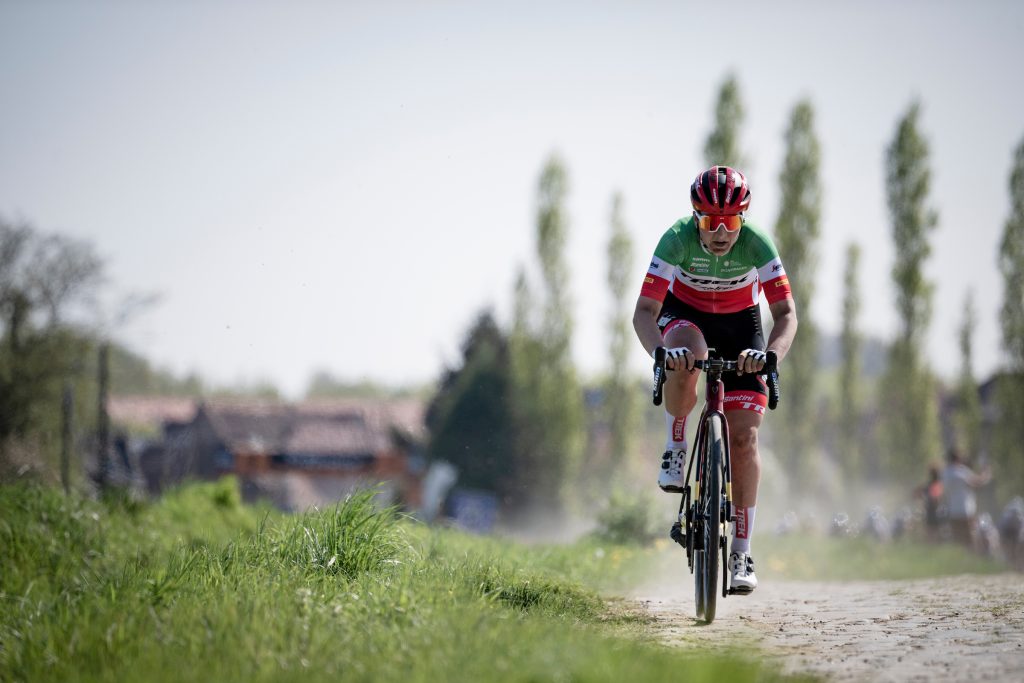
Meersman, an assistant director with Trek-Segafredo, has been painstakingly planning the logistics of this small army of helpers since shortly after New Year’s. “Ah yes, my “bidon guys!” he says when I call to ask about this crucial behind-the-scenes element. While a number of other teams approach Classics logistics similarly, for Trek this is a Meersman specialty, a labor of love.
The bidon guys are volunteers, not staff. They’re mostly friends of Meersman’s; he’s from Tielt, in the heart of Flanders, so he has many friends to call on. He was a Classics style racer himself during his career in the early 1980s, who rode alongside guys like Claude Criquelion and the Planckaert brothers, and podiumed at Gent-Wevelgem and le Samyn.
Just after January 1 every year, Meersman looks at the race schedule and starts to text the bidon guys. “We need a lot of help for the Classics,” he says, not just Roubaix but the Flemish races too. “In total I have 18 guys who come to help us, and in the beginning of the year I make a schedule and a forecast of [which races] we need three cars or one, and I ask the guys if they can come those days or not.”

Flanders takes five cars, or 15 of the 18 possible helpers. Roubaix takes six cars, all the bodies. For the two days of racing, Trek-Segafredo will prep 400 bottles for handups from the team cars, by soigneurs at the official feed zones, and from the bidon guys. Mechanics build 21 bikes, and 14 extra sets of wheels to distribute to the two follow cars and the bidon guys. The team doesn’t pay the guys for their help. But unsurprisingly, everybody is available for Flanders and Roubaix.
Everybody has a role, says Meersman. You need a good driver, of course, although speed isn’t the name of the game, exactly. “The most important is the guy next to the driver, who says, ‘Here we go left and on the roundabout we go right and over the bridge,’ or whatever.” It’s almost like rally racing: “You can be a good driver, but if you take the wrong road, you’re wrong.” In the back, No. 3 stages all the stuff for the feed and makes sure the wheels are ready to go and probably tries not to get motion sick.
The driving and navigating is important because – I’m not sure if you noticed – there are 29 sectors of cobbles for the men and 17 for the women and only six cars full of bidon guys. “We do 34 spots with six cars,” says Meersman – some important sectors get teams in the middle and at the end. Some teams hit as many as six different spots in the race, leapfrogging across the course as it zig-zags around, madly trying to jump ahead. “But for some of these guys they can’t do that many because you’re in the middle of [Arenberg] forest,” adds Meersman, and it takes longer to get in and out. “And then you have to go to two more long sections, always in the middle. It’s a hell of a job to get there.”
Meersman tells the crews not to speed; there are too many spectators on the road, too much risk. The cars all get accreditation stickers, but as anyone who’s driven a race can tell you, even that doesn’t always get a friendly wave onto the course from police. “If they say no, then you gotta turn back 180 degrees and go somewhere else, try a different spot,” he says.
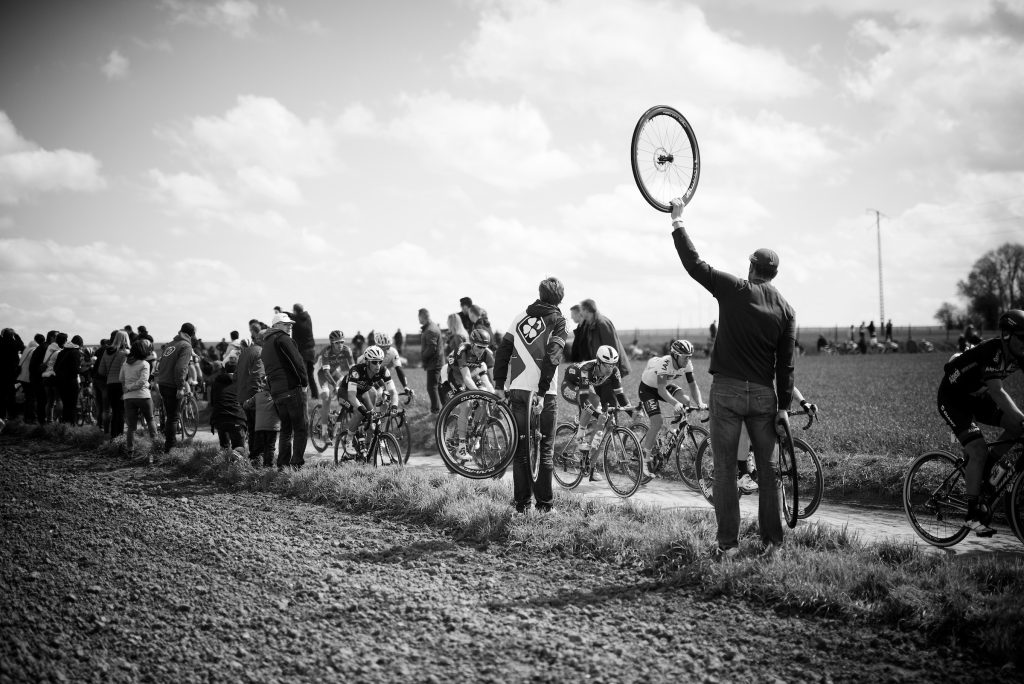
Which might be the truest strength of the bidon guys: just as Meersman does a course recon with the riders, one of the bidon guys does his own recon. On a nice March day, he takes the course map, puts his mountain bike on the car and drives around, looking for shortcuts and back routes that can get the teams between sectors more quickly. Does that gravel lane go through or does it dead-end in some farm field? Is Google maps correct when it shows a road? The bidon guys know. “Sometimes it’s unbelievable where they drive across,” Meersman says with a laugh.
Still, they don’t always get there, and Meersman has to tell the riders that a particular sector isn’t staffed. But almost always, they do, and when the race passes, they spring into action. At the end of sectors, the job is mostly to hand up bottles, which sounds simple except the racers are sprinting at 30 mph trying to catch back on, and you’re leaning out into the course so they see you, trying to peer through the dust and find your riders, while not getting run over by a moto or causing a crash.
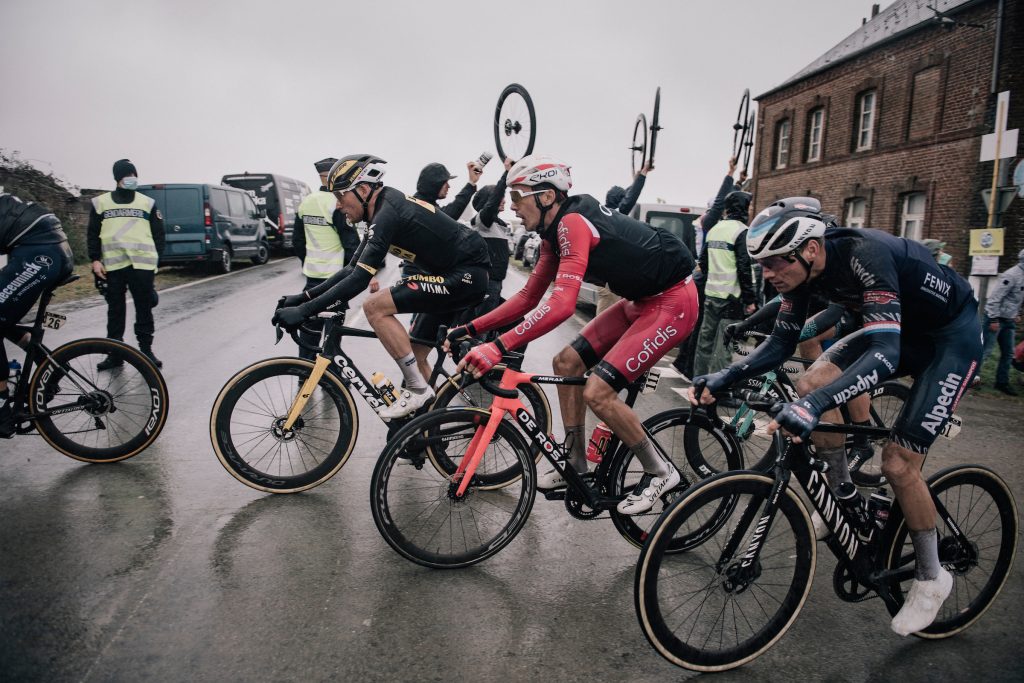
Mid-sector, the bidon guys are mostly watching for mechanicals and crashes. “Some of the guys can put [spare] wheels in the bike and I have some guys who cannot,” says Meersman, especially with disc brakes and through axles. If a rider needs a wheel, the assistant will either tell them he can handle the change, or he’ll just hand them the wheel. “There’s never a discussion,” says Meersman; the riders are always just happy to have a wheel.
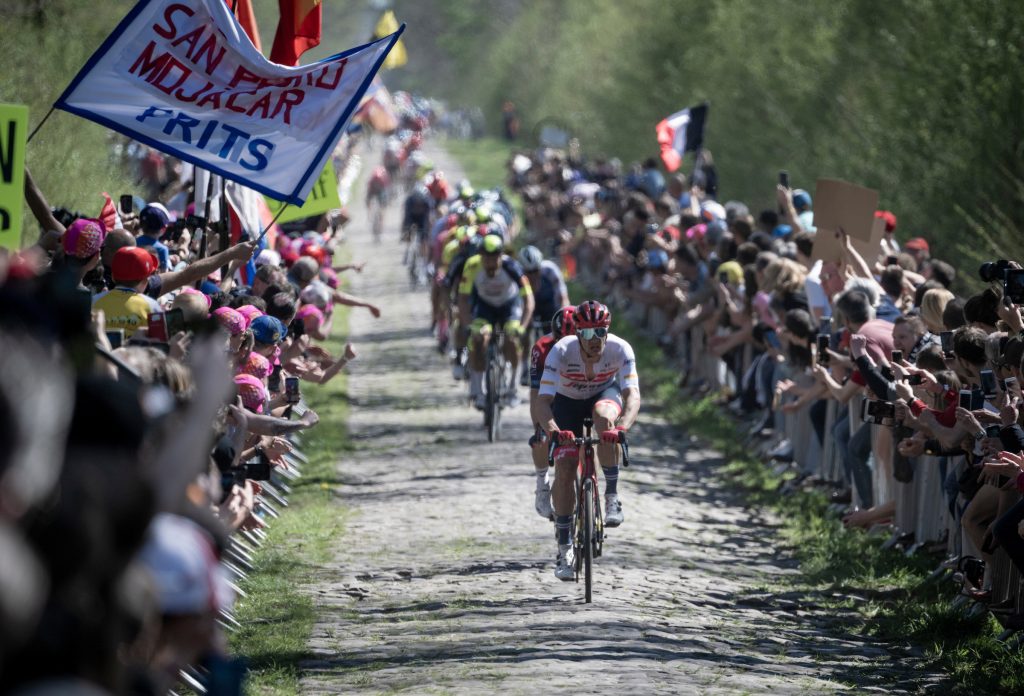
When the race passes, the teams don’t always immediately hustle to the car. Roubaix is the most chaotic race on the calendar; it’s impossible for teams to keep track of what’s going on at every point. Meersman is, like always, in Team Car 1, right behind the race, and each of the crews is equipped with a short-range walkie-talkie to give him a quick report.
Even that has a protocol. Meersman, after all, is dealing with multiple communication channels: official race radio, a radio channel to the riders and other cars and team staff, and trying to track the race as best he can. “If they all talk at the same time, you hear nothing,” says Meersman. So they wait for his prompt, “and only then they know they can talk.” Each of the teams has a simple stopwatch to take time gaps. “Sometimes the race organization is not so accurate, so if Mads Pedersen is in front, I ask the guys what is the time gap to the group behind, who is there, and where are the other guys?” The bidon guys also send Meersman updates via group chat, which is especially helpful as advance scouting for course conditions that may have changed since recon day.
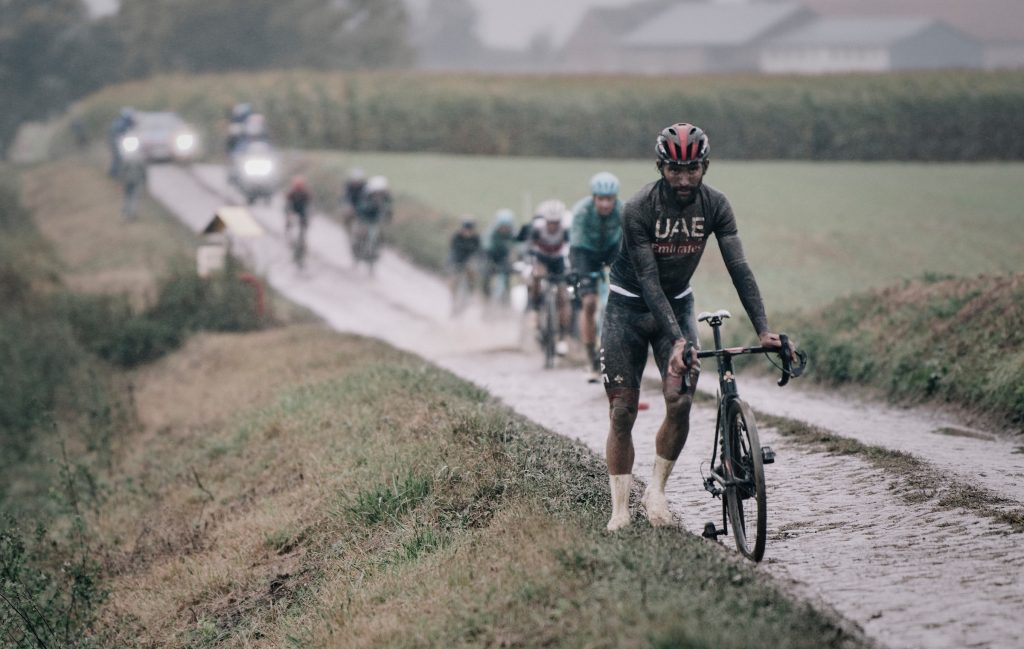
Inevitably, things will go wrong: instead of getting to a sector 10 minutes before the race passes, a car of bidon guys will be 10 seconds too late. Maybe the communications won’t go smoothly. And for the past two years, the workload has doubled, because the team has provided the same support to its female riders.
It makes for a long weekend for Meersman. “It’s a lot of work preparing all that shit,” he says, laughing. But it’s worth it. The women’s team, after all, has won both editions of Paris-Roubaix Femmes so far and are strong contenders for a third straight. The men bring a team bookended by Pedersen, third at last week’s Tour of Flanders, and Jasper Stuyven, three times a top-10 finisher at Roubaix. A win, if it comes, wouldn’t be possible without the bidon guys. If it comes, they’ll celebrate over a beer, and in eight months, Meersman will break out the schedule and start texting the guys: “Hey, what’s April looking like for you?”
Did we do a good job with this story?

